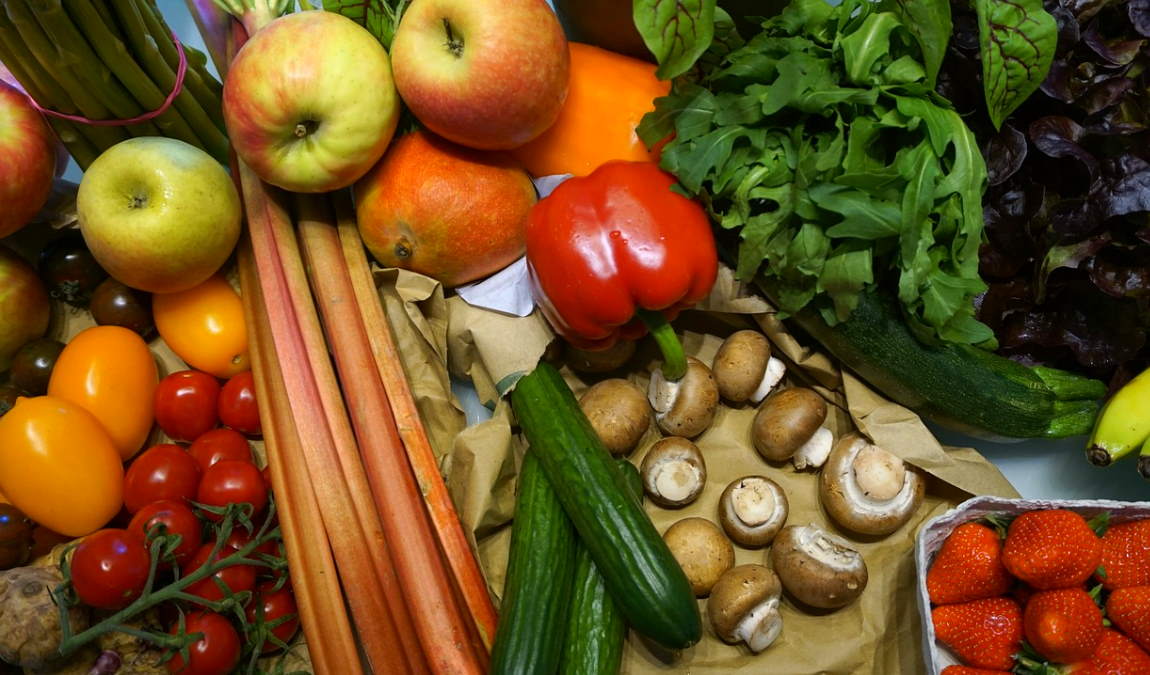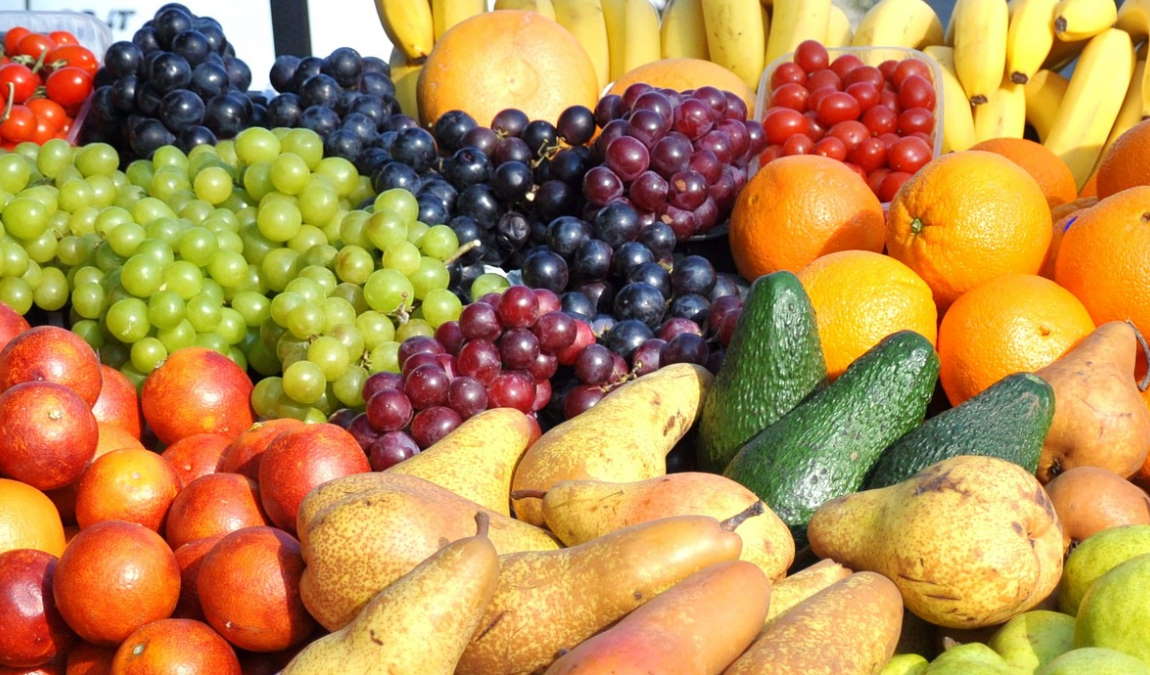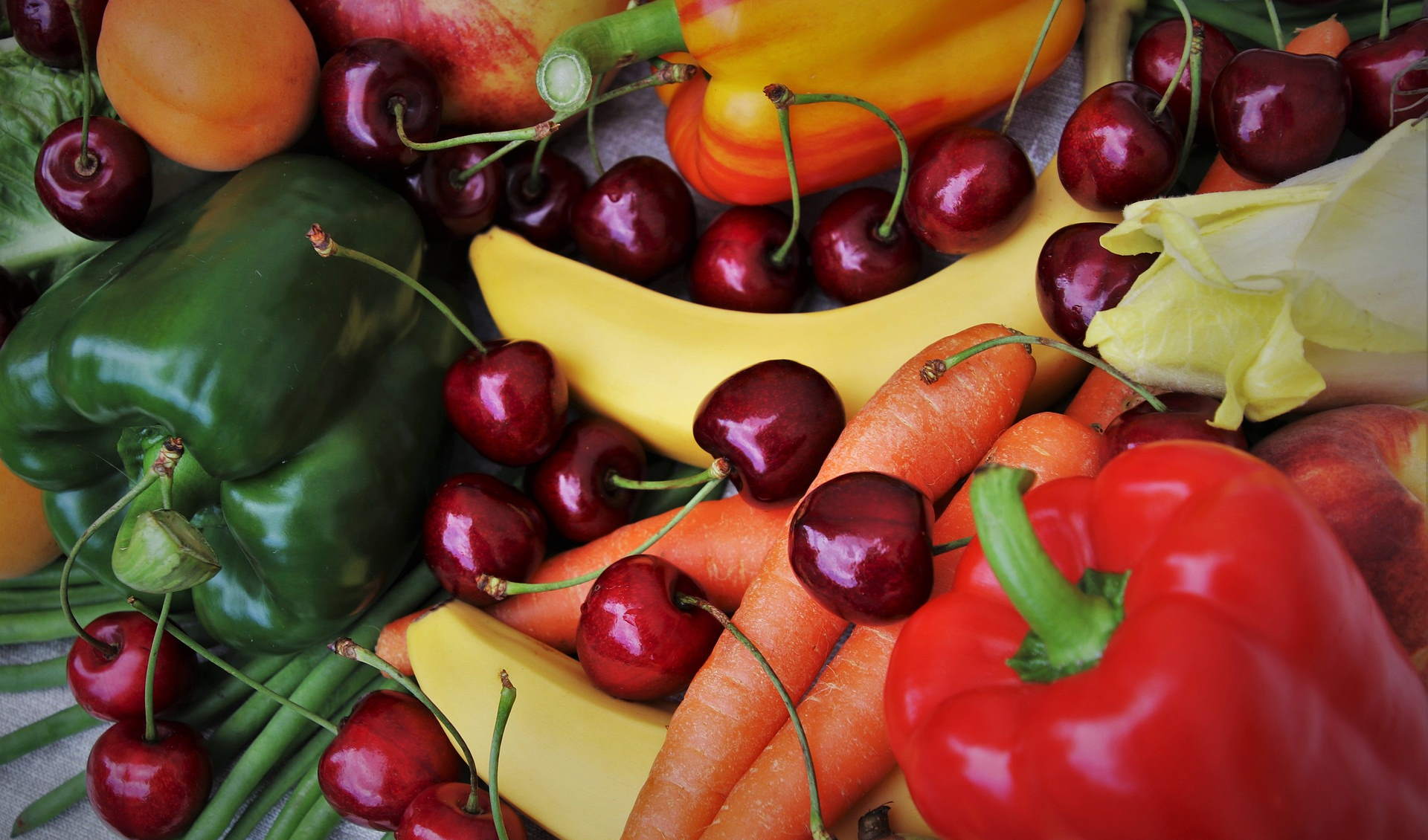Germany is all about well-maintained city streets, good service, delicious food, festivals and an extensive programme of excursions. If you're travelling with young travellers, you can be sure they won't be bored.
There are water parks, museums and all kinds of activities for children. Beach lovers can enjoy the Baltic coast and Bavarian lakes in summer or the inviting ski resorts in late autumn.

When planning a trip, many parents are concerned about the organisation of meals on the trip. Kidpassage has prepared a separate article to this topic. In this article, we continue the theme of children's food and detail what fruit and vegetables to try in Germany, as well as their prices in supermarkets and markets.
What fruit and vegetables are grown in Germany
Germany is situated in the centre of Europe, a geographical location that would not lead one to expect tropical diversity and exoticism. It grows crops typical of regions with moderate continental climates, while others are imported from neighbouring countries.
However, there is an abundance of fruit and vegetables on the shelves of shops and supermarkets all year round.
What are the local fruits and vegetables in Germany? The fruits you can try in Germany depend on the season. Early April sees the first harvest of strawberries, strawberries, cucumbers, tomatoes, radishes and asparagus. Summer brings raspberries, cherries, blueberries, currants, cranberries, blackberries and beans. In July, cherries, peaches, nectarines and pumpkins bloom. In late summer, grapes, apples, pears, plums, potatoes and early varieties of cabbage ripen.

In October, late varieties of apples, pears, quinces, cabbage, carrots and onions are harvested and stored for sale until spring. Fresh herbs are grown in greenhouses throughout the year. Pumpkins are very rare in this region and farmers practically do not grow them. Watermelons and melons are imported from Latin America until early April and then brought in from Europe for the summer.
Oranges, bananas, kiwi, lemons, mangoes and other exotic fruits are imported from Asia, Africa and Latin America.
Citrus fruits can sometimes be found in greenhouses, but these are not industrial crops but individual plants. Modern technology makes it possible to produce any type of fruit all year round, but it is believed that the beneficial properties of the fruit are best expressed in local varieties grown in natural conditions: outdoors under the summer sun.
We have prepared a list of the fruit and vegetables that are sold in markets and supermarkets in Germany. The table shows their seasonality as well as their origin: i — imported varieties, l — local, and i+l — imported and local.
ii+l
| Name | Jan | Feb | Mar | Apr | May | Jun | Jul | Aug | Sep | Oct | Nov | Dec |
|
Aubergine |
i | i | i | i | i | i | i+l | i+l | i+l | i+l | i | i |
| Cauliflower | i | i | i | i | i+l | l | l | l | l | l | i+l | i |
| Beans | i | i | i | i | i | i+l | l | l | l | i+l | i | i |
| Broccoli | i | i | i | i | i | l | l | l | l | l | i+l | i |
| Peas | i | i | i | i | l | l | i+l | i+l | ||||
| Fennel | i | i | i | i | i | l | l | l | l | l | i+l | i+l |
| White cabbage | i+l | i+l | l | i+l | l | l | ||||||
| Kohlrabi | i | i | i | i | i+l | l | l | l | l | i+l | i+l | i |
| Pumpkin | i+l | i+l | l | l | i+l | |||||||
| Carrot | i | i | i | i | i | i | i+l | i+l | i+l | i+l | i+l | l |
| Paprika | i | i | i | i+l | i+l | i+l | i+l | i+l | i+l | i+l | i | i |
| Leek | i+l | i+l | i+l | i+l | i+l | i+l | l | l | l | l | l | l |
| Radish | i | i | i+l | i+l | l | l | l | l | l | i+l | i | i |
| Brussels sprout | i+l | i+l | i+l | l | l | l | ||||||
| Red cabbage | i+l | i+l | l | i+l | i+l | i+l | l | l | l | l | ||
| Leaf salad | i | i | i+l | i+l | i+l | l | l | l | i+l | i+l | i | i |
| Asparagus | i | i+l | l | l | i | |||||||
| Tomatoes | i | i | i+l | i+l | i+l | l | l | l | i+l | i+l | i+l | i |
| Zucchini | i | i | i | i | i | i+l | l | l | l | i+l | i | i |
| Onion | l | l | i+l | i+l | i+l | i+l | i+l | l | l | l | l | i |
| Iceberg Lettuce | i | i | i | i | i+l | l | l | l | l | i+l | i | i |
| Apple | l | l | l | l | i+l | i | i | i+l | l | l | l | |
| Pear | i+l | i+l | i | i | i | i | i+l | i+l | i+l | i+l | i+l | |
| Strawberry | i | i+l | i+l | l | l | i+l | i+l | i+l | i+l | i+l | ||
| Raspberry | i | i+l | l | i+l | i+l | |||||||
| Blueberry | i | i | i | i | i+l | l | l | i+l | i | |||
| Blackcurrant | i+l | l | i+l | i+l | ||||||||
| Cherry | i+l | l | i+l | |||||||||
| Nectarines | i | i+l | i+l | i+l | ||||||||
| Oranges | i | i | i | i | i | i | i | i | i | |||
| Cranberry | i | i | i | i+l | i+l | l | l | i+l | i | |||
| Grape | i | i | i | i | i | i | i | i+l | i+l | i+l | i | i |
| Walnuts | i+l | i+l | i+l | i | ||||||||
| Bananas, kiwi, pineapple | i | i | i | i | i | i | i | i | i | i | i | i |
Fruit and vegetable prices
Germany is one of the wealthiest countries in Europe. The cost of food is therefore higher than average. The price of fruit and vegetables varies according to the season. For example, in late autumn, when most produce has to be imported, prices rise gradually.
And in April, when farmers harvest their first crops of berries and fruit, prices start to fall gradually. The lowest prices for fruit and vegetables are in the summer, when markets and supermarkets sell a lot of locally produced produce. Smaller German towns have farmers' markets on certain days of the week.

City people buy meat and dairy products, eggs, mushrooms, cheese, vegetables, fruit and berries. Sometimes the prices of farm produce are several times higher than in supermarkets. Bargaining, as in oriental markets, is not common here.
In the table we've listed the costs of fruit and vegetables from the German supermarket website.
|
Name |
Qty |
Price, EUR |
|
Lemons |
1 kg |
2,1 |
|
Physalis |
0,1 kg |
1,39 |
|
Blackcurrant |
0,125 kg |
5,02 |
|
Blueberry |
0,125 kg |
1,49 |
|
Lime |
1 pcs |
0,49 |
|
Blackberry |
0,125 kg |
1,85 |
|
Ginger |
1 kg |
6,9 |
|
Pineapple |
1 kg |
3,29 |
|
Apples |
1 kg |
2,49 |
|
Melon |
1 pcs |
3,39 |
|
Carambola |
1 pcs |
1,39 |
|
Raspberry |
0,125 kg |
2,99 |
|
Pears |
1 kg |
1,79 |
|
Kiwi |
4 pcs |
1,99 |
|
Mango |
1 pcs |
2 |
|
Oranges |
1 kg |
2,99 |
|
Bananas |
1 kg |
2 |
|
Tomatoes |
1 kg |
4 |
|
Broccoli |
1 kg |
5,3 |
|
Garlic |
1 kg |
4 |
|
Cauliflower |
1 pcs |
2,99 |
|
Onion |
1 kg |
1,79 |
|
Kohlrabi |
1 pcs |
0,95 |
|
Zucchini |
1 kg |
1,79 |
|
Peking cabbage |
1 pcs |
2,66 |
|
Asparagus beans |
1 kg |
7,48 |
|
Paprika |
1 kg |
6,5 |
|
Asparagus |
1 kg |
13,98 |
|
Radish |
1 bundle |
0,89 |
*Prices taken from an online supermarket in the spring season. Prices for fruit and vegetables may vary depending on the season.
Tips for parents
As you can see from this article, the fruit that grows in Germany is familiar to all Europeans. To ensure that your holiday goes smoothly and without unpleasant incidents, you should follow a few simple rules:
- Do not give large quantities of fruit to children who are trying it for the first time.
- Keep antihistamines in your first aid kit in case of food allergies.
- During the hot season, check fruit carefully when you buy it and make sure you wash it under running water before eating it.
Where to buy fruit and vegetables in Germany
Fruits and vegetables are sold in supermarkets, organic stalls and farmers' markets.
The most expensive products are offered at organic shops, but in this case the producers guarantee that no harmful chemicals have been used in cultivation.
In addition, some farms offer an interesting service at the start of the berry season: by prior arrangement, you can come to the field, harvest your own crop, spend some time outdoors and enjoy fresh berries or fruit.
The crop is then weighed and paid for at an agreed rate. Sometimes it is cheaper than going to the supermarket or market.
Incredibly, Germany has an electronic catalogue of fruit-bearing trees that nobody owns. In such places, picking ripe fruit is completely free. At Mundraub.org you can see a map showing the location of fruit trees, nuts and herbs and their degree of ripeness. We hope you find the descriptions of the fruits of Germany useful. We wish you a pleasant journey and good experiences!






